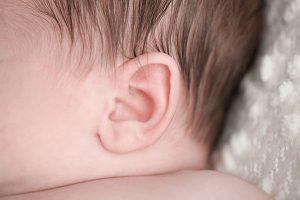Diagnostic Audiology Evaluation
Diagnostic Audiology Evaluation Methods
For children who do not pass newborn hearing screening, unless medically contraindicated, a diagnostic audiology evaluation should be completed by a pediatric audiologist before 3 months of age.
A diagnostic audiological evaluation battery includes:
Comprehensive Otoacoustic Emissions (OAE) Testing
OAE testing is used to identify outer hair cell dysfunction in the cochlea. Comprehensive, frequency specific OAE testing should be performed to help determine hearing status and can help to identify the presence of auditory neuropathy.
Electrophysiological Response Testing
Auditory brainstem response (ABR) and auditory steady-state response (ASSR) testing are used to assess the auditory nerve and the auditory brainstem pathways. Comprehensive ABR and ASSR tests are both evidence-based assessments for evaluating infants who are less than 6 months developmental age and provides an estimation of hearing thresholds for diagnostic purposes and hearing aid fitting. They can also be used to differentiate between a conductive or sensorineural hearing loss. Bone conduction ABR testing should be provided if air conduction results indicate hearing loss.
Immittance testing
Tympanometry and acoustic reflex-testing is used to assess middle ear function. Due to the plasticity of a newborn’s ear canal, low frequency (226 Hz) tympanometry is not considered accurate until approximately 6 months of age. High frequency (1000 Hz) tympanometry is recommended for children under 6 months of age, although this procedure may not be available in every location.
